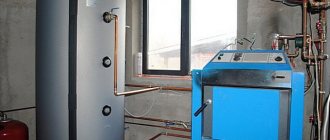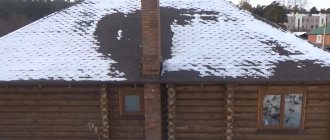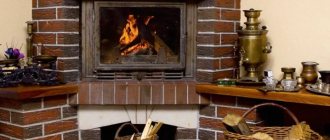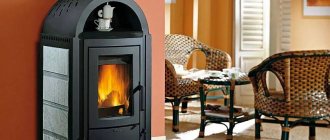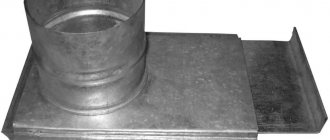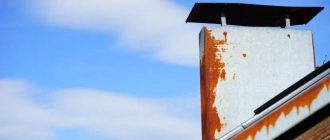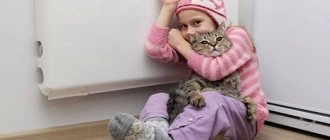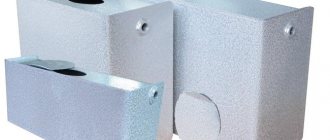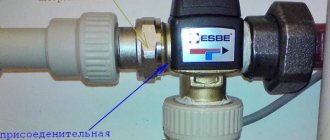A fireplace is a design often used in private homes to heat a room and create an aesthetic atmosphere. To ensure proper and safe operation of a home fireplace, it is necessary to correctly select and design the chimney. The chimney must be strong and reliable to prevent acrid smoke from entering the living space. Another important aspect when choosing a chimney is the ability of the material to withstand the aggressive effects of soot mixed with condensate.
Without a properly installed chimney, a fireplace or stove will not be able to perform its functions.
Brick chimney and sandwich chimney: design features
- What does this have to do with a sandwich? — a buyer once asked. And really, what does a sandwich have to do with a chimney? The fact is that the sandwich contains several layers of bread and filling, and this structure perfectly suits the description of modern chimney systems (DS). The role of bread here is played by steel, and the filling is thermal insulation.
For a very long time, the traditional solution was a brick chimney. However, technologies evolve, solutions are optimized and improved, and the chimney eventually became round.
This approach allowed:
- significantly reduce the shaft;
- reduce the time for cleaning the chimney, since there is no need to clean the corners;
- reduce fire hazard - in round chimneys the accumulation of soot, which can ignite, is significantly reduced.
And also in a round pipe there is better draft, and this makes the fuel burn evenly. Simply put, heat will not escape into the chimney through a round chimney, as happens in brick chimneys.
It is important to know! The chimney must be cleaned thoroughly, that is, soot must be removed, and not just loosened. Loosened soot can easily ignite from any spark.
How to position the smoke channel correctly
Chimneys according to the type of location are divided into:
- mounted - installed above the heating device and are actually its vertical extension;
- free-standing (radical) - the smoke channel is located vertically on the side of the unit, a separate foundation is built for it;
- wall ducts - the chimney is designed in the wall of the house.
The chimney can be brought out through the wall; this can be done even in an already constructed building
In relation to the building, the location of the chimney can be as follows:
- External. Its advantages: ease of installation both in a new house and in a previously built one; service availability.
Disadvantages of an external location: the chimney requires mandatory insulation, organizing the tightness of the passage through the wall. It is quite difficult to give an aesthetic appearance to a chimney when it is located externally; its rise above the level of wind pressure is inevitable.
- Internal. Advantages: the internal arrangement provides good draft, the chimney can be in the most vertical position.
Disadvantages of the internal location: additional work when passing the smoke duct through the interfloor and roof ceilings, very careful compliance with fire safety measures in these areas. Such a chimney will also occupy useful space in the room.
Stainless steel - why are chimneys made of it?
Improvements in technology have made it possible to create new materials that have given impetus to the development of the industry. For this reason, choosing stainless steel for the chimney shell became as logical a decision as giving it a round shape.
But thin-walled stainless steel did not immediately begin to be used for chimneys. The development of metallurgy has made it possible to improve the characteristics of steel and give it the necessary properties. In the case of steel chimneys, the main requirement is heat resistance.
Flue gases heat up to 800–1000 °C. A steel chimney can withstand high temperatures, but it is also a good heat conductor. And since a hot pipe can cause a serious burn, they decided to cover it with a protective heat-insulating layer.
But the thermal insulation layer also requires protection from atmospheric and other external influences. Therefore, they began to make a metal casing on top of the insulation, but not from heat-resistant steel, but from less ordinary steel, which does not need to withstand extremely high temperatures.
Material of manufacture and scope of application of modular pipes
For the production of modular chimneys, austenitic steel is used with good performance characteristics, which, accordingly, are reflected in the quality of the chimneys. Austenitic steel is characterized by wear resistance, acid resistance, and corrosion resistance. Such characteristics allow the use of steel chimneys in various, rather aggressive operating and climatic conditions.
Stainless steel chimneys are universal pipes and are suitable for connecting all known household heating appliances:
- Kaminov
- Firebox
- Furnaces
- Sauna stoves
- Kotlov
- Heating and cooking stoves
- Kitchen ovens for baking, etc.
Steel modular pipes are designed for safe and high-quality removal of combustion products from any fuel: gas, coal, diesel fuel and, of course, firewood.
Which chimney is considered reliable and safe?
Reliability and safety are the most important qualities of a chimney. If the chimney system does not meet these requirements, it is strictly forbidden to use it. And it doesn’t matter what material it’s made of. Here we can draw an analogy with construction: a house without a foundation will not stand, no matter how beautiful it is. Likewise, an unreliable chimney will not last long.
The chimney system is, first of all, a utility network and its selection and installation should be carried out exclusively by professionals. The same as with heating devices. Of course, a choice can be made based on its spectacular appearance and “reasonable” price, but the result of such a choice can be a fire or carbon monoxide poisoning.
The main thing when buying a steel chimney is the quality of the materials. Be sure to ask the seller for system test certificates, and also ask what fireproof clearances need to be made from flammable materials.
It is important to know! A reputable manufacturer will have test certificates for the chimney system and will inform the buyer of installation requirements and minimum clearances for flammable materials.
According to SP 7.13130.2013 Heating, ventilation and air conditioning clause 5.27 , the dimensions of the grooves and offsets for heat-generating devices and factory-made smoke ducts should be taken in accordance with the technical documentation of the manufacturer.
Simply put, your chimney manufacturer should guarantee your safety. If the cuts are not indicated, the manufacturer is confused about the values, which means that certification was not carried out and there were simply no tests. And, accordingly, no one guarantees your safety.
SP (set of rules) is a kind of law for builders. This document specifies and recommends standards for construction, design, production of building products and their operation. In other words, the joint venture is a kind of analogue of the administrative and criminal codes in construction.
If the equipment does not comply with the SP, it can be fully considered questionable, and therefore potentially dangerous to life and health.
Video description
About brick, ceramic and steel chimneys in the following video:
- Pipes are quite fragile , so they need a casing for protection. Often the consumer is offered a product without a box and insulation, which leads to additional costs.
- The quality of ceramics varies , making some ceramic chimneys vulnerable to damp environments and acidic condensation.
Most of the shortcomings are neutralized in the UNI ceramic chimney.
Schiedel specialists have developed a system designed for all types of heating devices. The chimney has the following advantages:
- Safety . UNI is a system with a minimum level of heating of the external surface. All elements of the system meet fire safety requirements, which is confirmed by the VNIIPO EMERCOM of Russia.
Features of the UNI chimney Source heatsystems.ru
- Quality . The UNI system is manufactured in accordance with all European and Russian requirements and internal standards. All ceramics for the Schiedel UNI system are produced in Germany, at the Schiedel plant.
- Equipment . The system is equipped with a decorative URATOP shell made of fiber concrete or a stone shell (made of expanded clay concrete blocks) with a front panel made of mineral fiber.
- Life time . All main components: ceramic pipe, insulation, stone shell have a guaranteed service life of 50 years.
The UNI ceramic chimney has been successfully sold in European countries since 1985, as evidenced by the title of sales leader; It has been sold on the Russian market since 2009. The system is used in low-rise and cottage construction, and it can be used both during the construction of new buildings and during reconstruction.
Method of fixing the ceramic system Source samstroy.com
What secrets do steel chimney manufacturers hide?
Any engineering system consists of nuances and the chimney is no exception. We will tell you what pitfalls you can stumble upon when choosing a DS.
Steel
The steel for the chimney must be extremely heat-resistant. In addition, the steel must withstand the negative effects of condensation - it falls out when cooling flue gases or moisture in the fuel.
Do not confuse condensation that forms in the chimney with drops on windows that appear in cold weather. Condensation in the chimney is far from water, but an aggressive acid, the effect of which only intensifies with each subsequent kindling.
If you see a steel chimney with traces of corrosion on the facade, it means that it has been exposed to condensation. But if the chimney rusts on the outside, what happened to it on the inside? It's simple: if corrosion has reached the outer shell, then the inner circuit is already rusted, the insulation is broken, and users of this sandwich chimney are exposed to mortal danger - carbon monoxide poisoning or fire.
It is important to know! Low-quality steel of the internal chimney pipe may rust within the first year of operation. This is called money down the drain.
How thick should the steel be for a chimney?
Many believe: the thicker the steel, the better and more reliable the chimney. But this is far from true.
Throughout the civilized world, steel with a thickness of 0.5-0.6 mm is used for the production of DS. If a manufacturer uses thicker metal, it means that he is trying to compensate for its poor quality. In chimney steel, the composition of the alloy is important, not its thickness!
Any conscientious manufacturer, be it Russian or European, meets these standards. The specified steel thickness allows the steel chimney to heat up quickly and evenly in order to create the necessary draft. Thinner metal reduces the weight of the structure, which saves on fasteners.
It is important to know! If a seller advises you to buy a steel chimney made of thick steel, ask him what additives are in the alloy? The fact is that the heat resistance of steel and its ability to withstand condensation directly depends on alloying additives (titanium, chromium, nickel, molybdenum), and not on the wall thickness. Choosing a chimney based on thickness is like judging the quality of clothing by its size.
When choosing a DS, always check the steel grade! For the inner pipe, the most reliable and safest grades are: AISI 316 (AISI 316L and AISI 316Ti can also be found, carbon and titanium are additionally added to these types of steel, which increases their corrosion resistance and makes them more durable), AISI 321 and AISI 444.
The use of these steel grades will allow the chimney to serve reliably and safely for up to 20 years. If other alloys are used, a steel chimney may fail after a couple of years of operation - the inner shell will simply collapse from condensation.
The outer shell does not need to withstand high temperatures and aggressive condensation, but this is not a reason to make it from low-grade steel. It should still protect the system from precipitation and mechanical influences. For the outer shell, AISI 304 or AISI 441 steel grades are used. Some manufacturers offer a painted outer shell made of galvanized steel. The paint must be heat-resistant and applied in several layers.
It is important to know! A well-painted shell indicates high quality production and reliability of the chimney.
Steel summary:
- the inner shell must be made of durable steel grades: AISI 316 (AISI316L or AISI 316Ti), AISI 321 or AISI 444. Other steel grades AISI 430, AISI 439, AISI304, AISI441 may become unusable in the first year;
- the outer shell can be made of lower quality steels;
- the steel thickness for a high-quality steel chimney should be 0.5-0.6 mm;
- For steel to be of high quality, it must contain alloying additives (titanium, nickel, chromium, molybdenum, etc.).
Principle of operation
During operation of the heating system, gases are released. They are hot, therefore dense, and rise into the smoke channel. When gases rise through the pipe, a reduced pressure is created inside it, drawing in cold air from the environment. Thus, combustion products are pushed out and discharged through the pipe. The air above the chimney is cold and has a different density compared to smoke. This difference allows smoke to escape easily from the stove or fireplace. This outgoing flow is called upward.
To ensure normal operation, it is important to consider the height of the chimney. If it is calculated incorrectly, the upward flow will slow down its movement or, conversely, accelerate it (if the pipe is too high or too small). Result: the overall heating of the room decreases, smoke begins to flow inside. If the design calculations are severely violated, reverse draft extinguishes the fire.
Device
Installing a chimney for stoves or fireplaces requires installers to know the norms for the permissible elevation of the pipe above the building. It should be located at a level of one and a half meters from the ridge of the roof and above. You cannot place the pipe below a line drawn from the ridge down at an angle of 10 degrees, if the pipe is located at a distance from the ridge of more than 3 meters. If the chimney is located at a distance of one and a half meters, then the pipe should not be below the horizontal line of the ridge. If the channel is located close to the ridge, at a distance of up to one and a half meters, then it should not be lower than its level (a deviation of 0.5 m is allowed).
You cannot install a smoke exhaust duct with ventilation pipes under one system. In this case, combustion products will be drawn into the ventilation system. This can be avoided by raising the furnace outlet above the ventilation system.
The chimney device involves installing a straight vertical pipe. If necessary, make turns. They are performed using special inclined elements at an angle of 45 degrees. The sum of the lengths of all inclined elements, regardless of the height of the chimney for stoves and fireplaces, should not exceed two meters. The minimum height is 5 meters.
Welds
The weld seam is one of the most vulnerable places in a chimney. Welding destroys the protective layer of metal and this is where the chimney is most susceptible to corrosion.
A poor-quality seam may not be airtight and, as a result, flue gases will escape. An unacceptable option for a chimney sandwich is spot welding or an overlap connection. The best and most reliable connection is a continuous butt seam.
Important! Always look at the welds. First of all, the seams of shaped elements - tees, bends, support plates. Here, welding costs an order of magnitude more than on straight pipes, and unscrupulous manufacturers can save on it.
Thermal insulation layer
Thermal insulation plays an equally important role in DS. She must:
- maintain the temperature in the inner pipe so that working draft is created in the chimney and flue gases are removed from the firebox;
- do not transfer high temperature to the structures enclosing the chimney to prevent fire.
Low-quality thermal insulation loses volume, settles, forming voids through which high temperatures will be transferred to the outer shell and, accordingly, to flammable materials. This is fraught with fire.
And also low quality insulation can absorb moisture, bake or coke. In these cases, it immediately loses its characteristics, forms cavities and exposes the outer shell to high temperatures.
The best option for a chimney would be a heat insulator that does not contain adhesive binders that burn out at temperatures of 500–600 °C.
Important! Ask the seller to show the insulation in the pipe. If it is printed from individual fibers, then within the first six months or a year it will lose its characteristics. High-quality insulation will be wrapped around the pipe like a blanket or consist of 2-3 segments.
Unscrupulous manufacturers use a trick - they create an illusion: they install rings consisting of high-quality segmented thermal insulation into the edges of the chimney, and fill the main space with low-grade material.
The golden rule for choosing stainless chimneys
A good chimney is also judged by its installation. When installing a steel chimney, the use of sealants, hammers, nails and screws is unacceptable. The chimney is assembled by inserting one element into another, and the joint is crimped with a clamp. This connection ensures high tightness and reliability.
The golden rule for buying a chimney is never take the price of one item as a guide. For example, the cost of a meter of pipe. Ask the manufacturer or retailer for a comprehensive quote to install the entire system. This way you can avoid pitfalls and compare real prices from different suppliers.
For example, cheap systems may have more fasteners and more expensive installation. Without paying attention to the comprehensive offer, which includes turnkey installation, you can get a low-quality chimney system at a good price.
